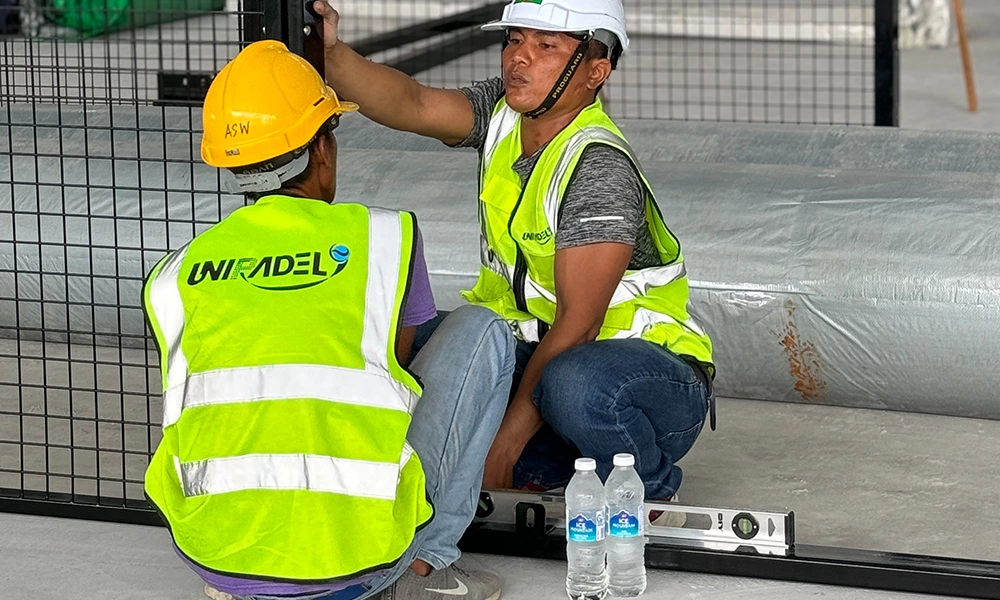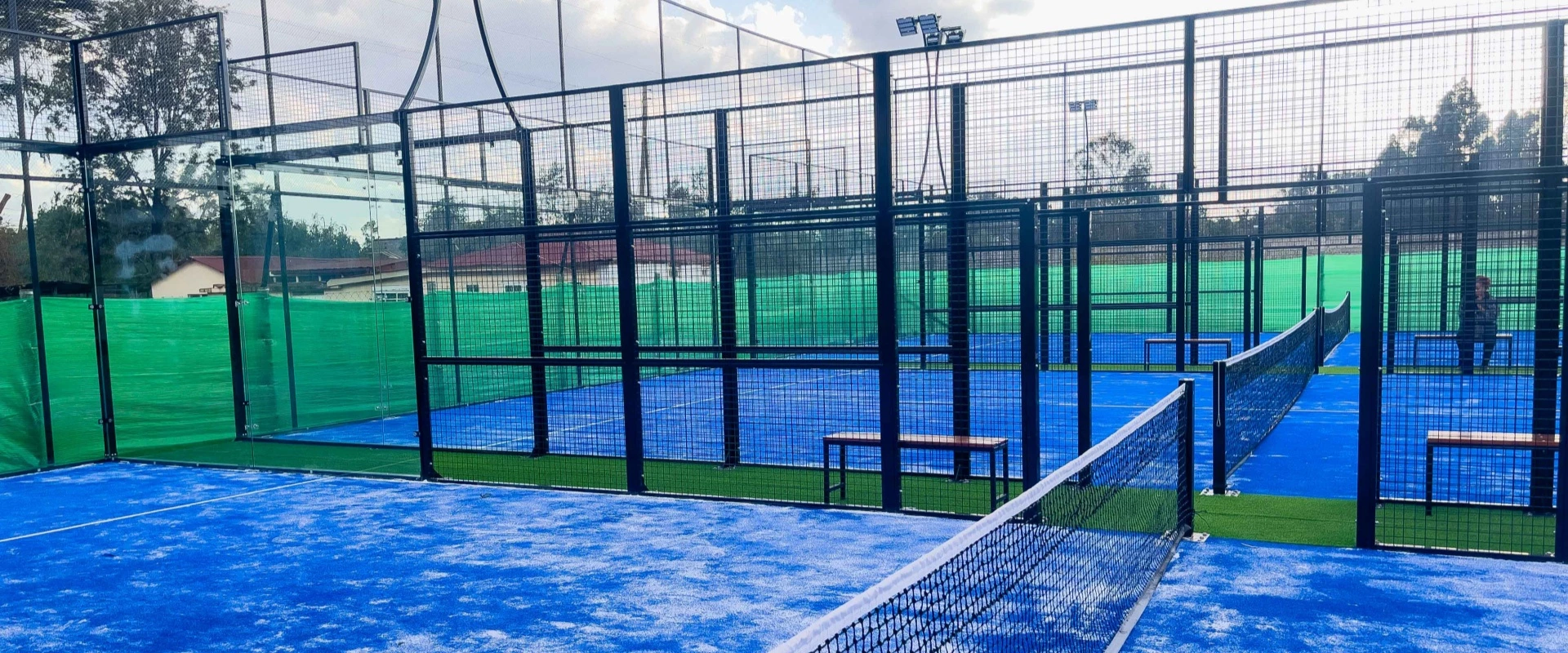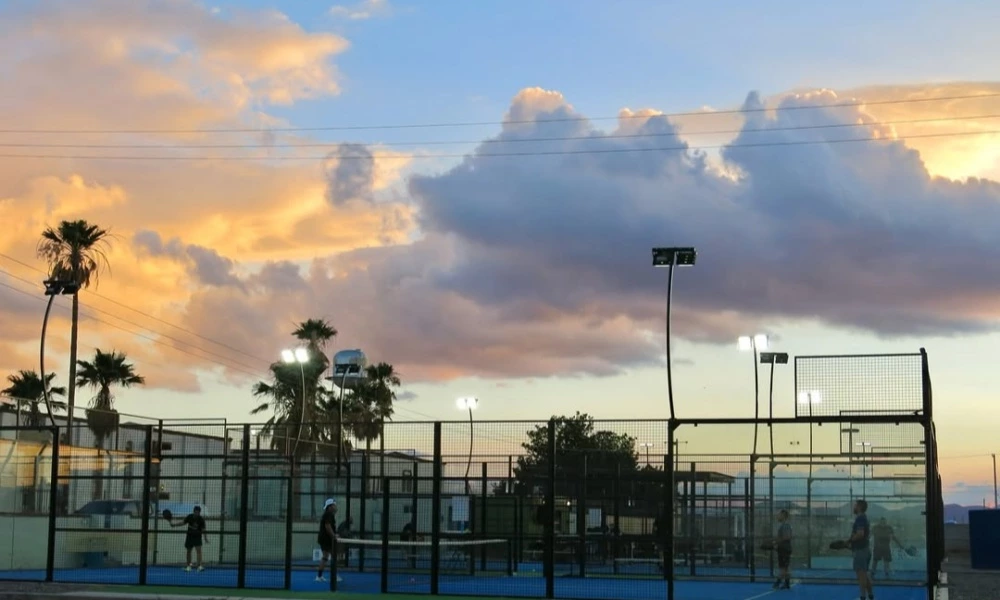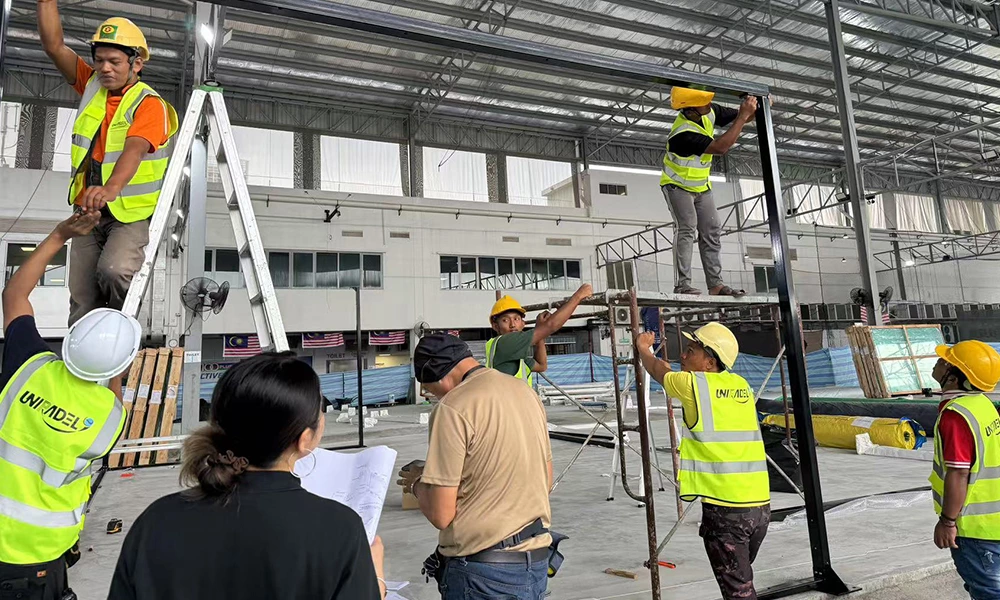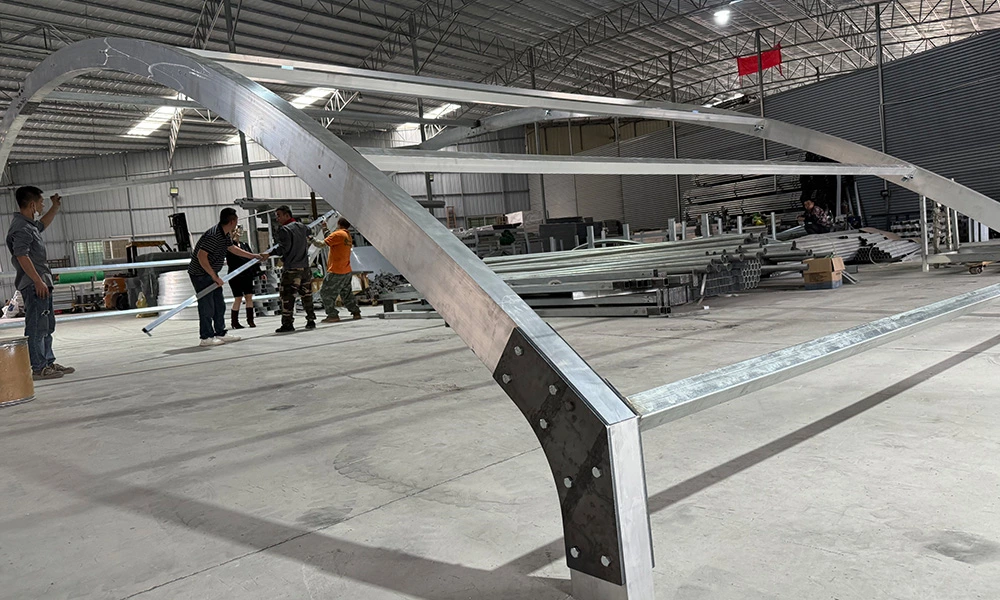Padel Court Complete Installation Process & Precautions
With the rapid popularity of padel sports around the world, more and more clubs, sports centers and private customers are starting to build their own padel courts. A high-quality padel court can not only enhance the sports experience, but also enhance the professional image and commercial value of the venue. The installation process of the padel court involves several key links, including ground foundation construction, steel structure construction, glass and fence installation, lighting and turf laying, etc. Each step is related to the safety, durability and aesthetics of the court.

What to prepare before installing a padel court?
Before installing a padel court, here are the key steps and factors to consider:
Design and planning
The standard size of the court is 10m x 20m, and it needs to be located in a suitable location, out of direct sunlight, and the materials (such as glass walls and metal mesh) are selected according to the International Padel Federation standards. In different countries around the world, it may be necessary to apply for planning permission from the local authorities to build courts for public use.
Environmental factors
Site selection: Try to choose a location with low ecological impact.
Environmental materials: Give priority to recyclable and durable materials such as recycled glass and environmentally friendly resins.
Energy-saving systems: Install LED lighting, rainwater collection systems, and design efficient drainage.
Landscape optimization: Plant native plants to enhance biodiversity and reduce water consumption.
Ground preparation
Clearing the site: Remove vegetation and obstacles, and level the foundation.
Excavation and compaction: Excavate as needed and compact the foundation with gravel or sand.
Drainage: Install a complete drainage system to avoid water accumulation.
Foundation construction: Use smooth and flat concrete or asphalt slabs as the court foundation.
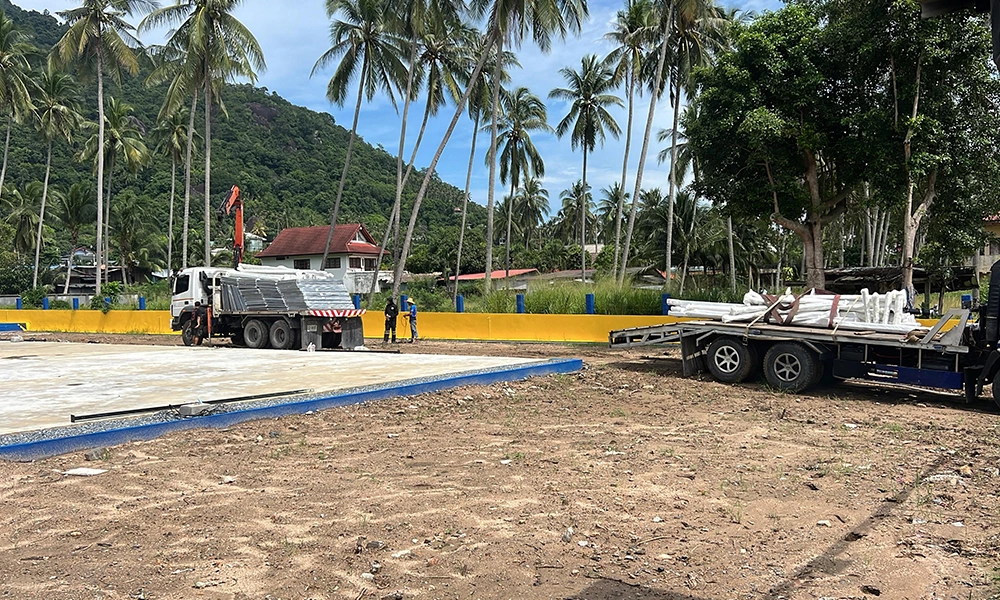
Drainage System Installation
Drainage is key to ensuring the all-weather use of the court. An efficient drainage system prevents water accumulation, prolongs the life of the court, and improves safety and playability.
Subbase and base construction
The subbase is made of crushed stone or gravel, which provides stability and drainage; the base is made of concrete or asphalt, which provides a solid support for the court surface. A high-quality foundation is key to ensuring the durability and safety of the court.
Padel court installation steps guide
At UNIPADEL, we are committed to providing our customers with top-notch padel court installation services, ensuring that every project meets the standards and requirements of the sport. Our installation process includes several key steps to ensure the durability and playability of the court.
1 Topographic survey
We conduct a comprehensive topographic survey to assess the suitability and foundation conditions of the venue. This initial inspection is crucial to help us develop an appropriate construction plan.
2 Define the boundaries of the court
We set up perimeter boards or curbs to clearly define the boundaries of the court. This step not only helps to maintain the integrity of the field, but also ensures that there is no interference from external factors during play.
3 Turf selection
When it comes to turf selection, our experts will select the most suitable artificial turf for specific needs to ensure the best performance and comfort of athletes during competition.
4 Lighting system and fencing
We install customized lighting systems and fencing to enhance the functionality and safety of the court, ensuring that athletes can have a good playing experience in all conditions.
5 Transport delivery
We use a transport delivery method to ensure that the court is fully operational and ready for use at any time. At the same time, UNIPADEL also provides professional maintenance services to help customers keep the padel court in perfect condition, so that every sports enthusiast can enjoy a high-quality game experience.
UNIPADEL - Install padel courts methods
When installing the posts, fences and light poles of padel courts, it is crucial to ensure quality, safety and functionality. Here are the detailed precautions and methods for several key aspects.
Step 1: Steel Structure Erection
Column Positioning and Securing
Use a forklift or manually to lift the columns one by one into their designated positions.
Secure the columns with bolts and embedded hardware, and use a level to adjust verticality to ensure the entire frame remains stable.
After each column is installed, re-measure the position to ensure the site dimensions adhere strictly to the standard 20m x 10m.
Beam and Steel Structure Assembly
Install the top beam, corner pieces, and center beams to create a complete rectangular frame.
Tighten the bolts individually with a torque wrench to ensure a secure connection.
After all installation is complete, check the diagonals of the entire steel structure to ensure tolerances are within the permitted range.
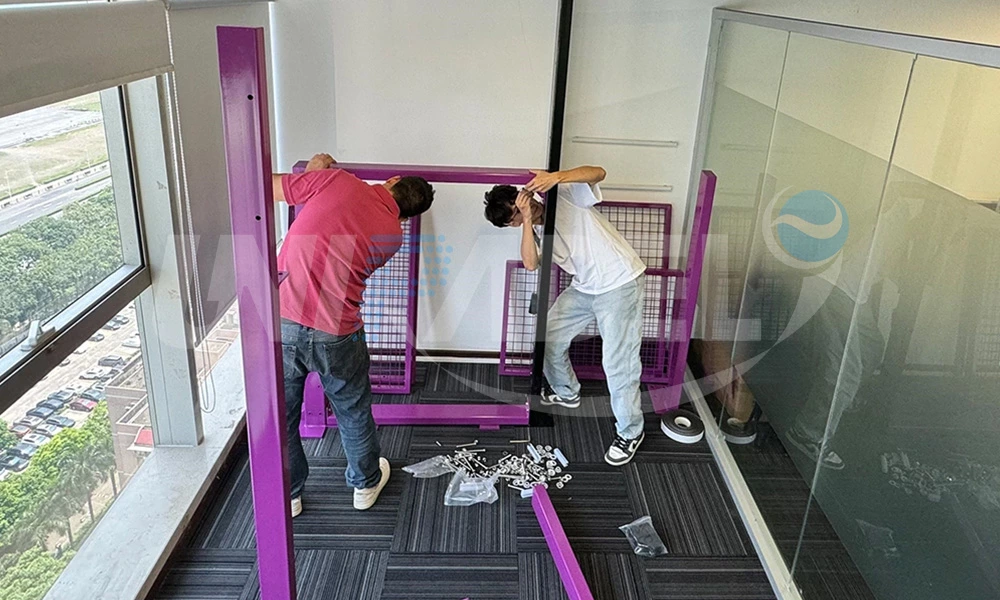
Step 2: Fence Stretching and Securing
Unfolding and Preliminary Securing
Unfold the fence from one side and hang it on the hooks on the uprights to establish a preliminary position.
Tension Adjustment
Use a fence tensioner to tighten the fence section by section, ensuring a flat surface and even tension.
Workers repeatedly walk over the fence to check for wrinkles and sagging.
Edge Safety
Secure the fence edges with dedicated clips and screws to prevent loosening during collisions.
Inspect every seam and clip to ensure there are no burrs or exposed metal corners to avoid safety hazards.
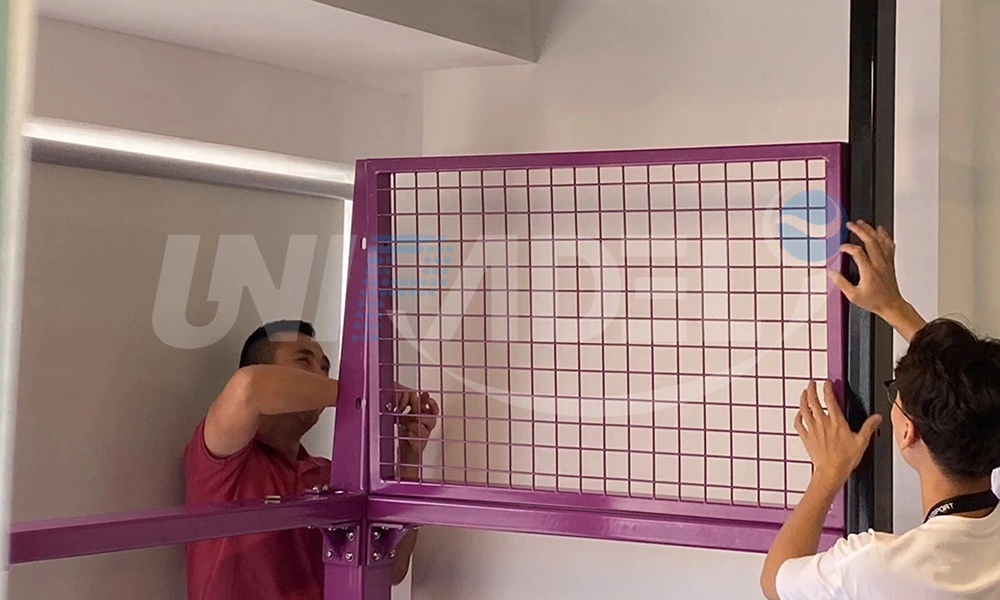
Step 3: Glass Panel Installation
Handling and Protective Measures
Use professional vacuum suction cups to handle the glass to prevent slipping caused by manual handling.
Anti-collision rubber strips are placed around the glass to prevent it from colliding with steel columns during installation.
Piece-by-Piece Installation and Positioning
Starting from the corners, install each glass panel sequentially. After inserting each glass panel into the column slot, secure it with rubber gaskets and metal clips.
Check the verticality and parallelism of each glass panel to ensure uniform joint gaps.
Final Alignment and Safety Check
After all glass panels are installed, perform an overall alignment to ensure the flatness of the entire wall and prevent the ball from bouncing off the wall.
Workers tap the glass to confirm it is secure and free of loose components, and clean any dust from the surface.

Step 4: Lighting System Installation
Lamp Arm and Fixture Installation
Secure the lamp arm into the pre-determined holes at the top of the pillar and secure with bolts.
Install the LED fixture and adjust the angle to ensure even light coverage across the entire court.
Wiring and Commissioning
The electrician completes insulation protection for the wiring connectors and conducts a power test.
Adjust the fixture's orientation on-site to avoid direct light into the players' eyes and ensure optimal visibility.
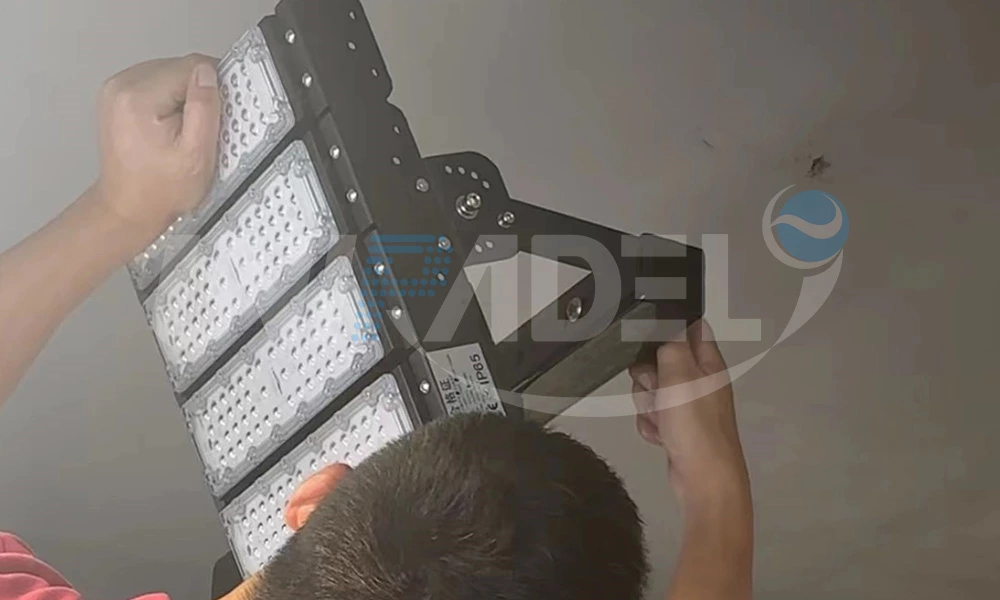
Step 5: Artificial Turf Installation
Turf Rolling and Positioning
Roll the turf rolls along the length of the field, ensuring the grain is aligned.
Allow a trimming margin to avoid gaps at the edges.
Cutting and Splicing
Workers use specialized cutters to cut the turf along the field lines, ensuring even joints.
Joint the strips with seam tape and turf glue, then compact them with a roller to prevent warping.
Sand Filling and Combing
Evenly spread quartz sand to increase turf stability and friction.
Use a combing machine to repeatedly brush the turf strands to straighten them and restore their ideal elasticity.
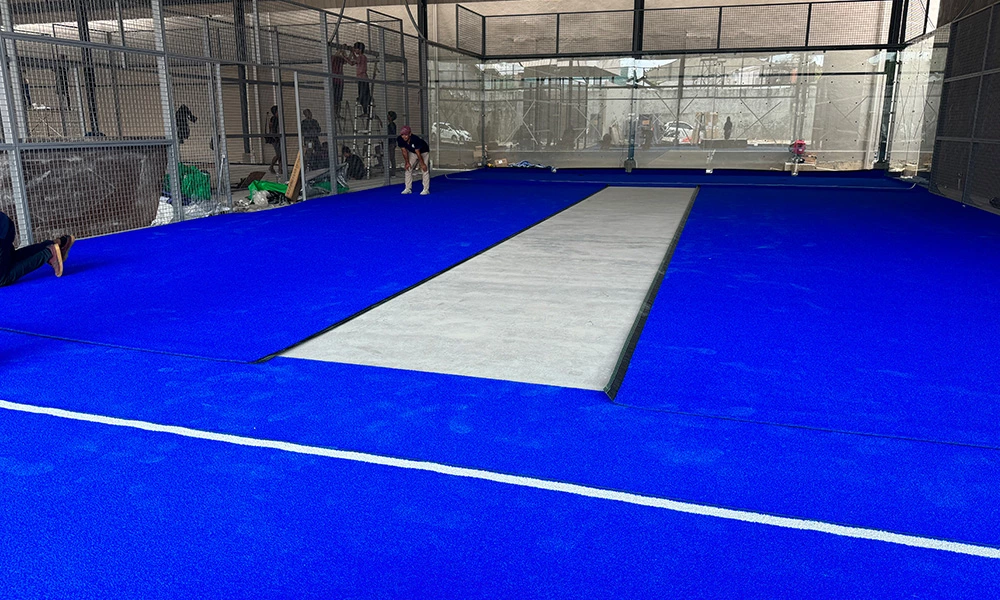
Step 6: Final Inspection
Full Court Inspection
Inspect bolts, clips, glass, and mesh individually to ensure they are free of looseness or defects.
Check turf joints and ensure even distribution of quartz sand to prevent irregular ball speeds.
Functional Test
Conduct a nighttime simulation test with lighting on to ensure uniform illumination and no shadows or blind spots.
Conduct a trial handover to test the glass bounce angle and turf friction coefficient to ensure they meet competition standards.
Formal Handover and Maintenance Recommendations
Clean up the construction site and hand over the court to the customer.
Provide routine care and maintenance recommendations, such as regularly grooming the turf, checking bolt tightness, and cleaning the glass.
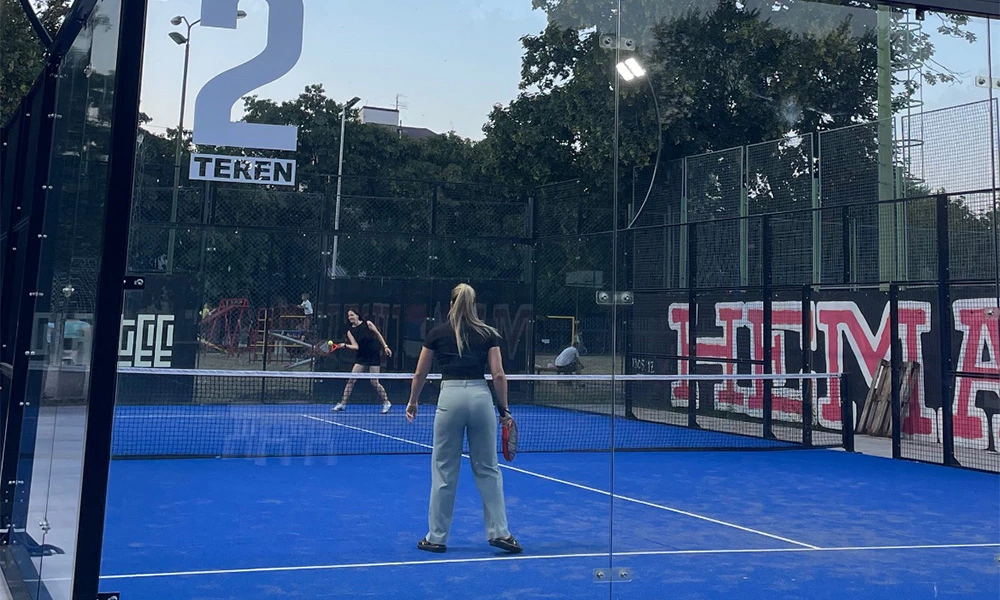
Why choose UNIPADEL to install your padel court?
At UNIPADEL, we are committed to creating an excellent padel court experience for our customers. With years of industry experience and a passion for excellence, our team provides exceptional service and customized solutions for every project.
01.Expertise
Our installation team has been rigorously trained to master the latest technology in padel court construction, ensuring that every detail meets international standards.
02.Quality Materials
We select durable and high-performance structural materials and artificial turf to ensure that the court not only looks great, but also lasts for a long time, bringing you a high-quality sports experience.
03.Personalized Design
Whether it is the size of the field, the color of the frame or the style of the turf, we can tailor it to your needs to create a padel court that perfectly blends into your environment.
04.Efficient Delivery
With our perfect production process and logistics services, we are able to complete the project within a tight time and budget, so that you can enjoy your new padel court with peace of mind.
Choose UNIPADEL and experience the expert service of padel courts trusted by customers around the world!
